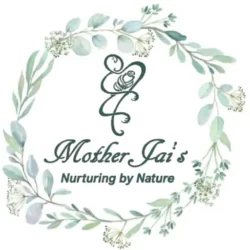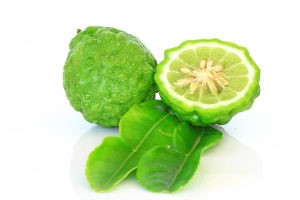
Roman Chamomile (Chamaemelum nobile)
Botanical Name: Anthemis nobilis / Chamaemelum nobile
Common Method of Extraction: Steam Distilled
Plant Part Typically Used: Flowers/Buds
Color: Gray/Very Pale Blue
BLENDS WELL WITH: Bergamot, clary sage, eucalyptus, geranium, grapefruit, jasmine, lavender, lemon, neroli, oakmoss, palmarosa, rose, tea tree
Chamaemelum nobile commonly known as Anthémis, Anthémis Odorante, Anthemis nobilis, Babuna Ke Phool, Camomille d’Anjou, Camomille Noble, Camomille Romaine, Chamaemelum nobile, Chamomilla, Chamomile, Chamomillae Ramane Flos, English Chamomile, Fleur de Camomille Romaine, Flores Anthemidis, Garden Chamomile, Grosse Kamille, Ground Apple, Huile Essentielle de Camomille Romaine, Low Chamomile, Manzanilla, Manzanilla Romana, Ormenis nobilis, Roman Chamomile Essential Oil, Romische Kamille, Sweet Chamomile, Whig Plant.
Composition of Roman Chamomile Oil: main components include a-pinene, b-pinene, camphene, sabinene, 1,8-cineole, myrcene, caryophyllene, y-terpinene, propyl angelate and butyl angelate.
Roman chamomile comes from northwestern Europe and Northern Ireland where it creeps close to the ground and can reach up to one foot in height. Gray-green leaves grow from the stems, and the flowers have yellow centers surrounded by white petals, like miniature daisies. Its leaves are thicker than German chamomile, and it grows closer to the ground. The flowers smell like apples.
The plant is used to flavor foods, in herbal teas, perfumes, and cosmetics. It is used to make a rinse for blonde hair, and is popular in aromatherapy; its practitioners believe it to be a calming agent to reduce stress and aid in sleep. It can also be used to create a fragrant camomile lawn. A chamomile lawn needs light soil, adequate moisture, and sun in order to thrive. Each square meter contains 83-100 plants. The lawn is only suitable to light foot traffic or in places where mower access is difficult.
Its properties make it appropriate for the treatment of cracked nipples that develop during breastfeeding. It can be applied directly to the skin for pain and swelling. It is not recommended for use during pregnancy as it can cause uterine contractions and miscarriage.
How to Use Roman Chamomile
The appropriate dose of Roman chamomile depends on several factors such as the user’s age, health, and several other conditions. At this time there is not enough information to determine an appropriate range of doses for Roman chamomile. It is not known if Roman chamomile interacts with any medications. There are no known interactions with other herbs and supplements. There are no known interactions with foods.
- Tea: Pour 1 cup of boiling water over 2 to 3 heaping tsp. (2 to 4 g) of dried herb, steep 10 to 15 minutes. Drink 3 to 4 times per day between meals.
- Bath: Use 1/4 lb. of dried flowers per bath, or add 5 to 10 drops of essential oil to a full tub of water to soothe hemorrhoids, cuts, eczema, perineal pain, or insect bites.
- Cream/Ointment: Apply cream or ointment containing 3 to 10% chamomile content.
History and Facts
Chamomile is one of the oldest, most widely used and well-documented medicinal plants in the world and has been recommended for a variety of healing applications. Chamomile plants are a member of the Asteraceae/Compositae family. There are two common types of chamomile used medicinally today: German chamomile (chamomilla recutita) and Roman chamomile (chamaemelum nobile).
Roman chamomile essential oil is steam-distilled from the plant’s flowers and has a sweet, fresh, apple-like and fruity aroma. After distillation, the oil ranges in color from brilliant blue to deep green when fresh but turns to dark yellow after storage. Despite the color fading, the oil does not lose its potency. Approximately 120 secondary metabolites have been identified in chamomile, including 28 terpenoids and 36 flavonoids. Roman chamomile essential oil is mainly constituted from esters of angelic acid and tiglic acid, plus farnesene and a-pinene, which have anti-inflammatory and antibiotic properties.
Considered to be one of the most ancient and versatile essential oils, Roman chamomile essential oil has been used to treat a variety of conditions because of its anti-spasmodic effects due to its high esters content. Today, it’s commonly used in the natural treatment of nervous system problems, eczema, fever, heartburn, gout, anxiety and insomnia.

Proven Benefits of Roman Chamomile Essential Oil
Fights Anxiety and Depression: Roman chamomile essential oil has been used as a mild sedative to calm nerves and reduce anxiety by promoting relaxation. Inhaling Roman chamomile is one of the best ways to utilize essential oils for anxiety. The fragrance is carried directly to the brain and serves as an emotional trigger. Research shows that Roman chamomile has been used for relief of depressive and anxiety symptoms all over the world, including a number of regions in southern Italy, Sardinia, Morocco and Brazil.
Serves as a Natural Allergy Reliever: Roman chamomile possesses antimicrobial and antioxidant properties, and it’s commonly used for hay fever. It has the power to relieve mucus congestion, irritations, swelling and skin conditions that are associated with seasonal allergy symptoms. When applied topically, Roman chamomile oil helps relieve skin irritations that may be due to food allergies or sensitivities.
Helps Alleviate PMS Symptoms: Roman chamomile essential oil serves as a natural mood booster that helps reduce feelings of depression — plus its antispasmodic properties allow it to soothe menstrual cramps and body aches that are commonly associated with PMS, such as headaches and back pain. Its relaxant properties make it a valuable remedy for PMS symptoms, and it can even help clear up acne that may appear as a result of hormone fluctuations.
Reduces Symptoms of Insomnia: The relaxing properties of Roman chamomile promote healthy sleep and fight insomnia. A 2006 case study explored the inhalation effects of Roman chamomile essential oil on mood and sleep. The results found the volunteers experienced more drowsiness and calmness, demonstrating its potential to improve sleep and help enter a restful state. Inhalation of chamomile reduces a stress-induced increase in plasma adrenocorticotropic hormone levels.
Boosts Skin Health: Roman chamomile promotes smooth, healthy skin and relieves irritations because of its anti-inflammatory and antibacterial properties. It has been used as a natural remedy for eczema, wounds, ulcers, gout, skin irritations, bruises, burns, canker cores, and even skin conditions like cracked nipples, chicken pox, ear and eye infections, poison ivy, and diaper rash.
Supports Digestive Health: Chamomile is used traditionally for numerous gastrointestinal conditions, including digestive disorders. Roman chamomile essential oil contains anodyne compounds that are antispasmodic and can be used to treat or relieve digestive issues, such as gas, leaky gut, acid reflux, indigestion, diarrhea and vomiting. It’s especially helpful in dispelling gas, soothing the stomach and relaxing the muscles so food can move through the intestines with ease. Because of its relaxing properties, Roman chamomile can also be used internally and topically to get rid of nausea.
Promotes Heart Health: Roman chamomile provides cardiovascular protection because of its high levels of flavonoids, which have been shown to significantly reduce mortality from coronary heart disease when taken internally. Because of the flavonoids present in Roman chamomile essential oil, it may lower blood pressure and have a relaxing effect on the heart.
May Relieve Arthritic Pain: A study in human volunteers demonstrated that chamomile flavonoids and essential oils penetrate below the surface into deeper skin layers. This is important for their use as topical anti-inflammatory agents that can effectively treat arthritic pain. When applied topically or added to a warm water bath, Roman chamomile oil helps reduce pain in the lower back, knees, wrists, fingers and other problematic areas.
Gentle Enough for Children: For centuries, mothers have used chamomile to calm crying children, reduce fevers, eliminate earaches and soothe upset stomachs. It’s often called the “kid calmer” because of its ability to help children with ADD/ADHD, and it’s one of the gentlest essential oils on the planet, making it great for infants and children.
Displays Anticancer Activity: Studies evaluating chamomile on pre-clinical models of skin, prostate, breast and ovarian cancer have shown promising growth inhibitory effects. In a 2007 study conducted at Case Western Reserve University in Ohio, chamomile extracts were shown to cause minimal growth inhibitory effects on normal cells but significant reductions in cell viability in various human cancer cell lines. Chamomile exposure induced apoptosis in cancer cells but not in normal cells at similar doses. The study represents the first reported demonstration of the anticancer effects of chamomile.
In addition to these Roman chamomile essential oil benefits, preliminary research suggests that chamomile may also help treat hemorrhoids, have a protective effect on pancreatic beta cells in diminishing hyperglycemia-related oxidative stress, relieve symptoms of vaginitis (vaginal inflammation), treat the common cold, and relieve sore throat and hoarseness.
How to Use Roman Chamomile Essential Oil
Roman chamomile essential oil is available in health stores and online. It can be diffused, applied to the skin topically and taken internally. Here are some easy ways to use Roman chamomile oil:
- To fight anxiety and depression, diffuse 5 drops, or inhale it directly from the bottle.
- To improve digestion and leaky gut, apply 2–4 drops topically to the abdomen. When diluted with a carrier oil like coconut oil, it can even be used in low doses for children with colic and diarrhea.
- For a restful sleep, diffuse chamomile oil next to bed, rub 1–2 drops onto the temples or inhale it directly from the bottle.
- To help calm children, diffuse Roman chamomile oil at home or dilute 1–2 drops with coconut oil and apply the mixture topically to the area in need (such as the temples, stomach, wrists, back of neck or bottoms of the feet).
- To use as a home remedy for acne, treat various skin conditions and combat the signs of aging, add 2–3 drops to a clean cotton ball and apply chamomile oil to the area of concern, or add 5 drops to a face wash. If you have very sensitive skin, dilute chamomile with a carrier oil before applying it topically. (15)
- To promote heart health, apply 2–4 drops topically over the heart or take internally by placing it under the tongue.
- To ease nausea, inhale Roman chamomile directly from the bottle, or combine it with ginger, peppermint and lavender oil and diffuse. It can also be used topically on temples to help with nausea.
Roman Chamomile Essential Oil Precautions
Because Roman chamomile oil is an emmenagogue, which means that it stimulates blood flow in the pelvic area, it should not be used during pregnancy.
Possible Interactions: If you currently take any of the following drugs, you should not use chamomile without first talking to your health care provider.
- Blood thinning medications (anticoagulants and antiplatelets): Chamomile may increase the risk of bleeding when taken with blood-thinners such as warfarin (Coumadin), clopidogrel (Plavix), and aspirin.
- Sedatives: Chamomile can make these drugs stronger, including:
- Anti-seizure drugs, such as phenytoin (Dilantin) and valproic acid (Depakote)
- Barbiturates
- Benzodiazepines, such as alprazolam (Xanax) and diazepam (Valium)
- Drugs to treat insomnia, such as zolpidem (Ambien), zaleplon (Sonata), eszopiclone (Lunesta), and ramelteon (Rozerem)
- Tricyclic antidepressants, such as amitriptyline (Elavil)
- Alcohol
- The same is true of sedative herbs, such as valerian, kava, and catnip.
- Blood pressure medications: Chamomile may lower blood pressure slightly. Taking it with drugs for high blood pressure could cause blood pressure to drop too low.
- Diabetes medications: Chamomile may lower blood sugar. Taking it with diabetes drugs could raise the risk of hypoglycemia or low blood sugar.
- Other drugs: Because chamomile is broken down by the liver, it may interact with other drugs that are broken down the same way. o weeks at a time and use only the highest quality essential oil.






